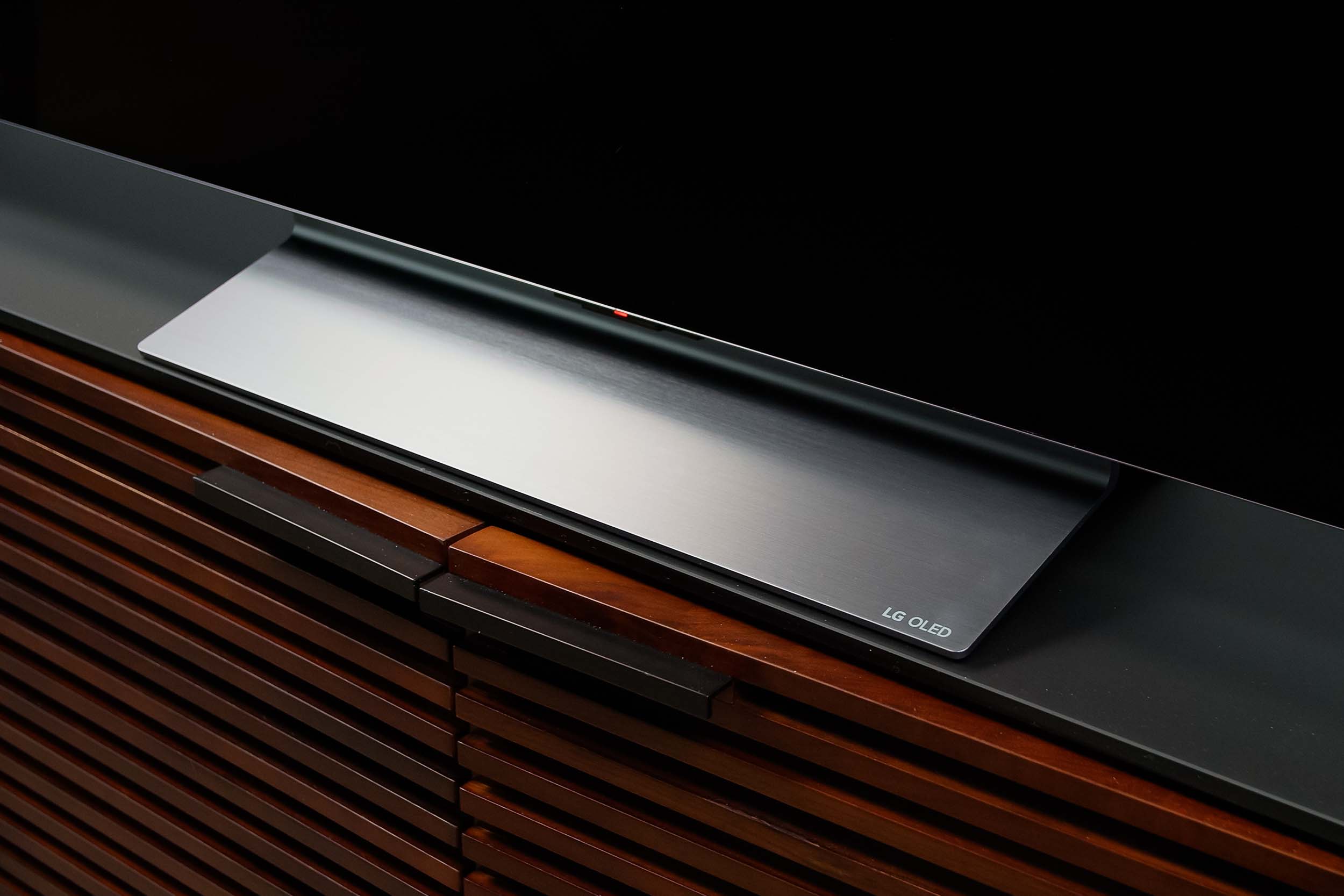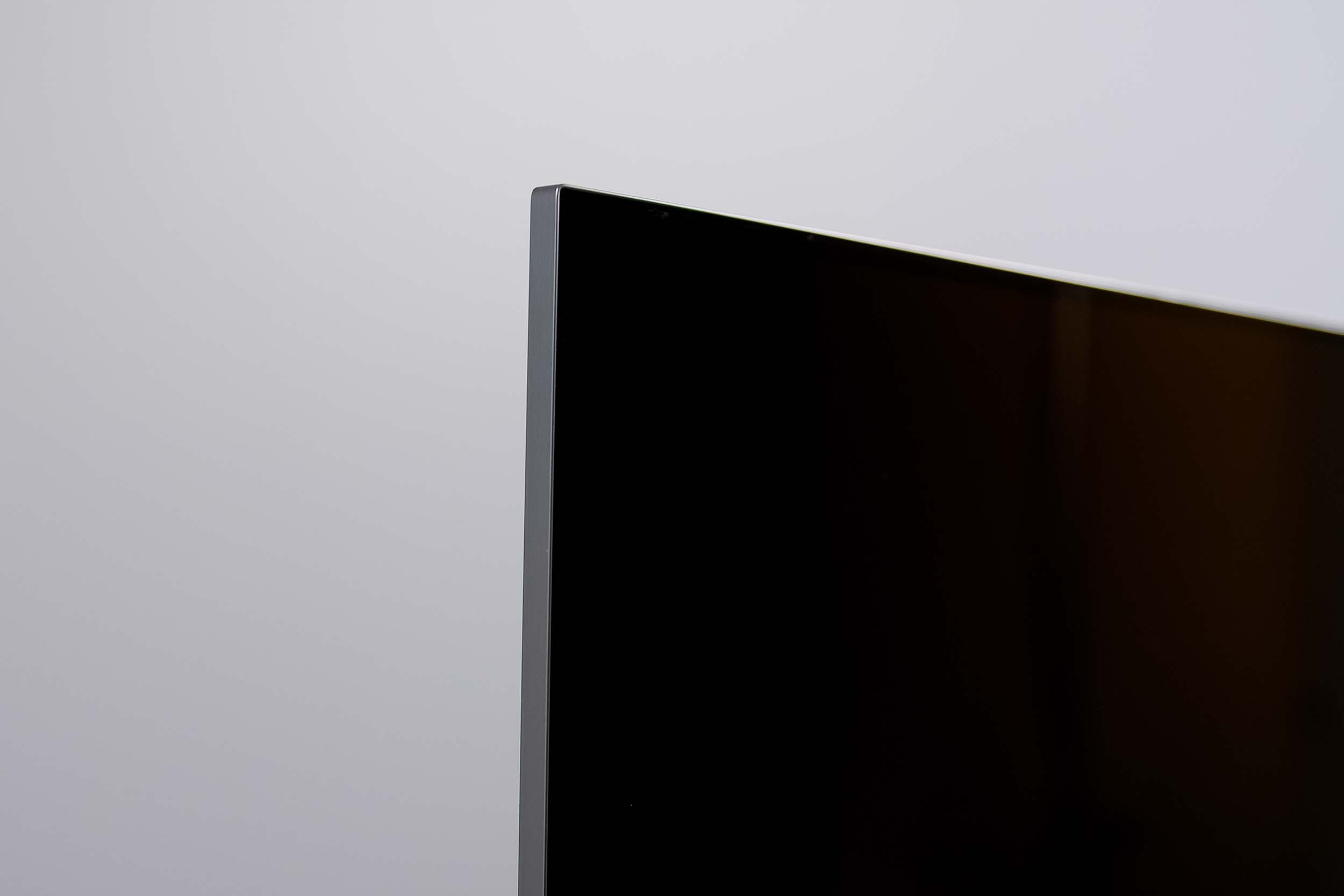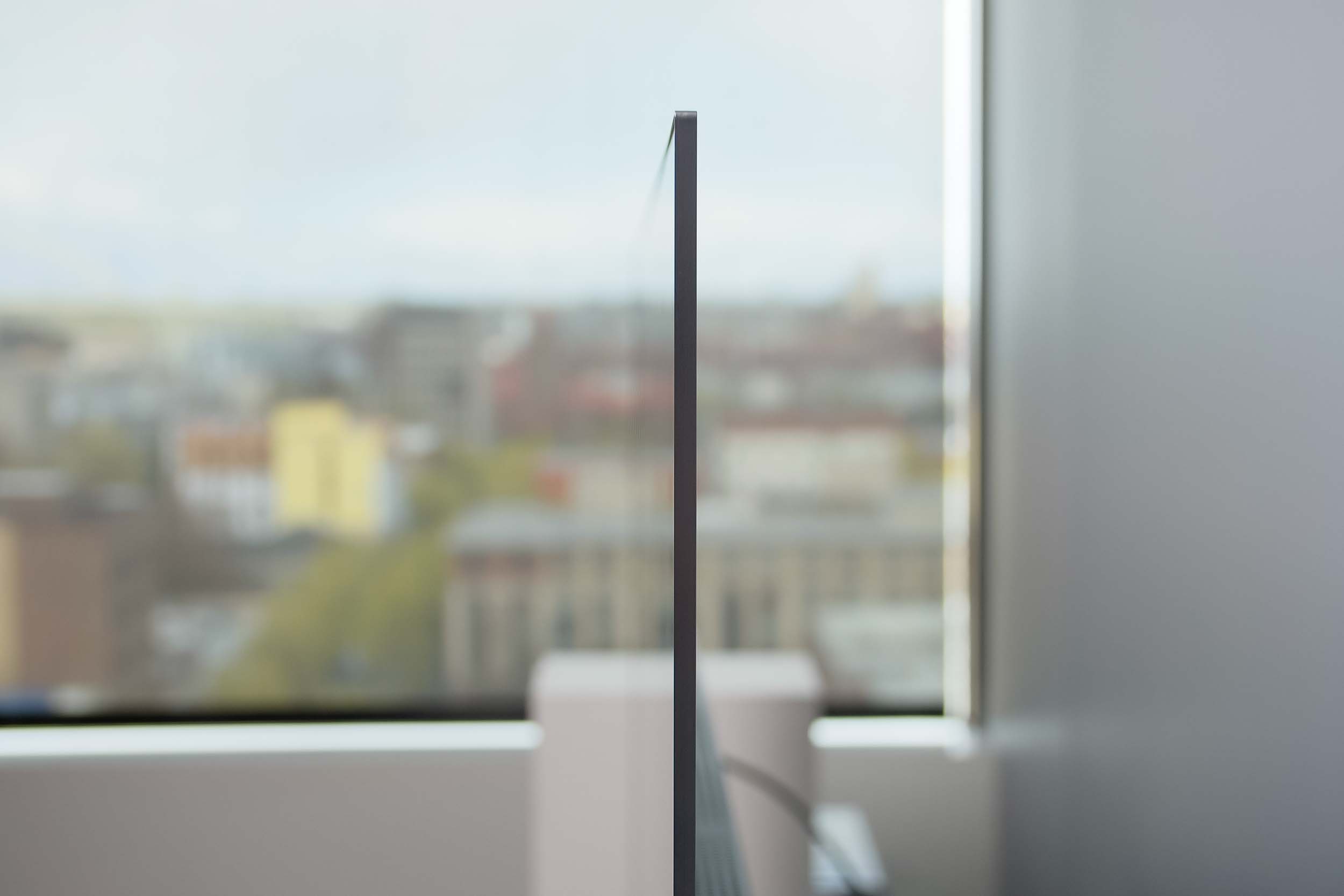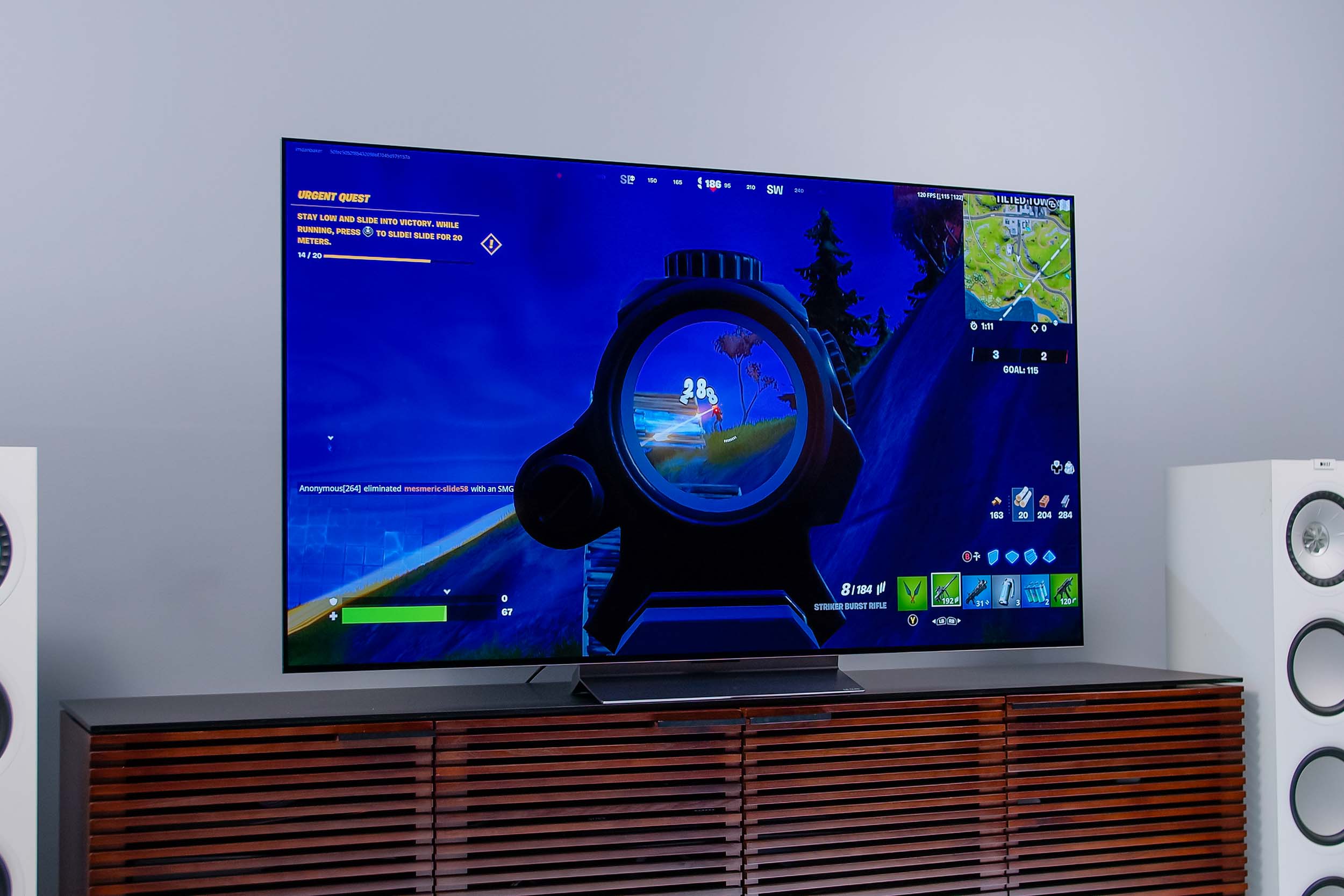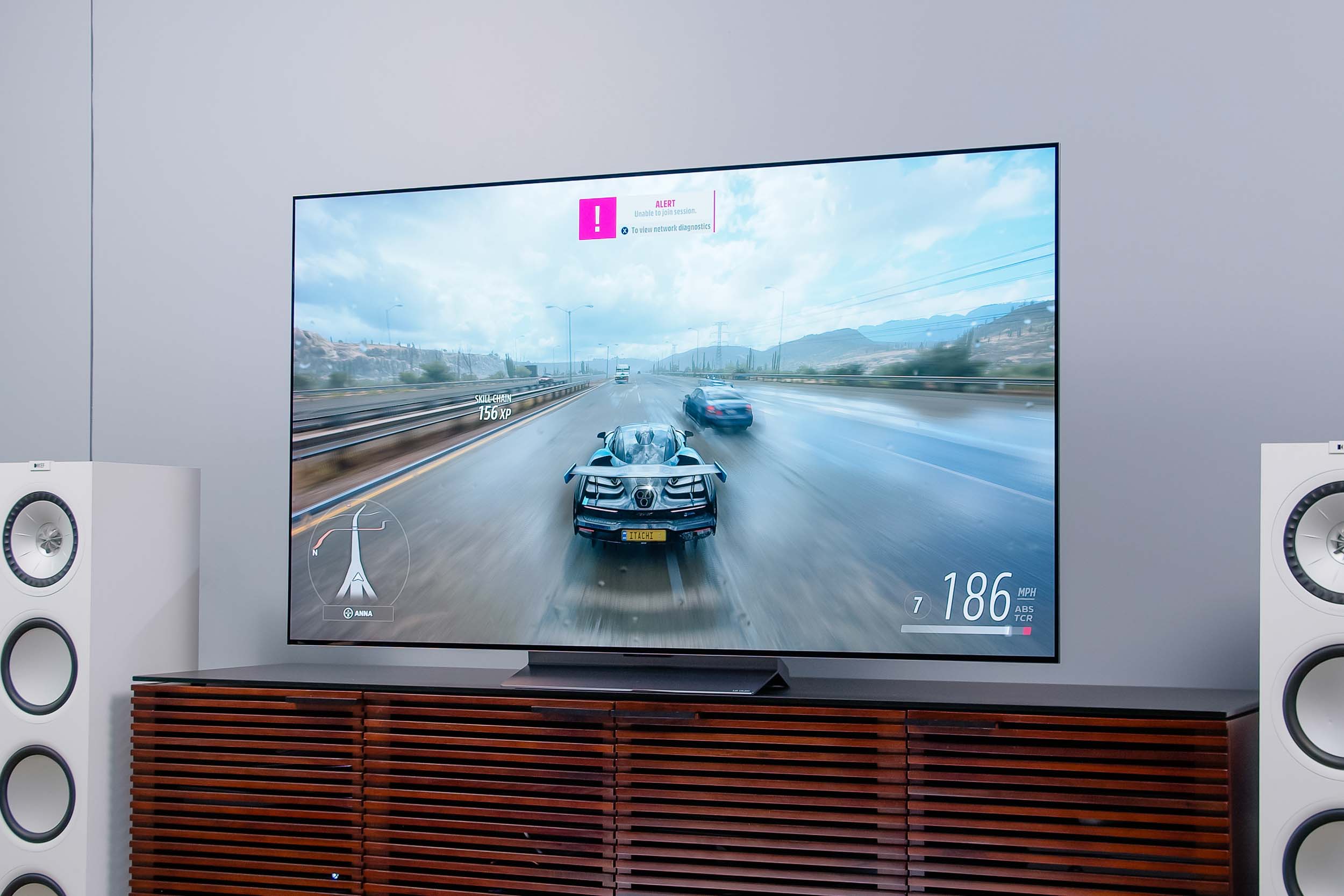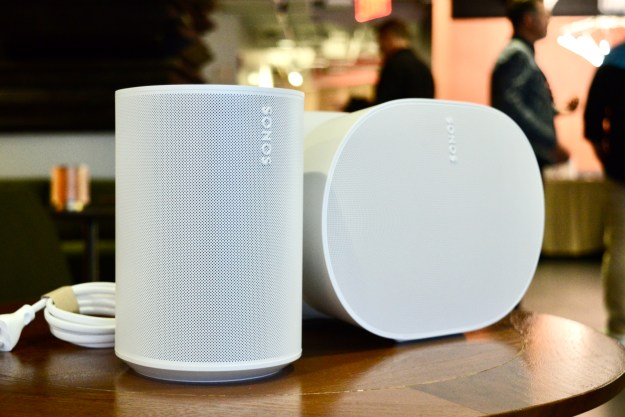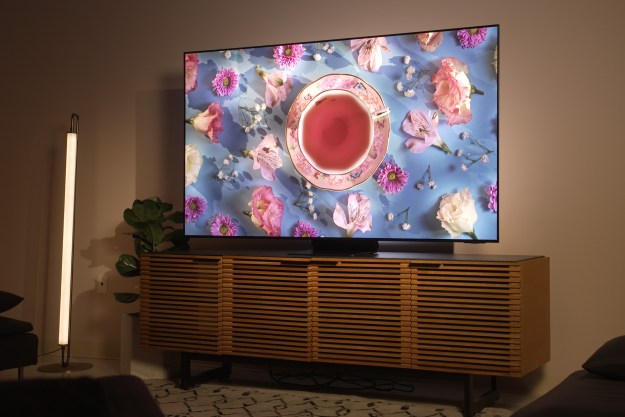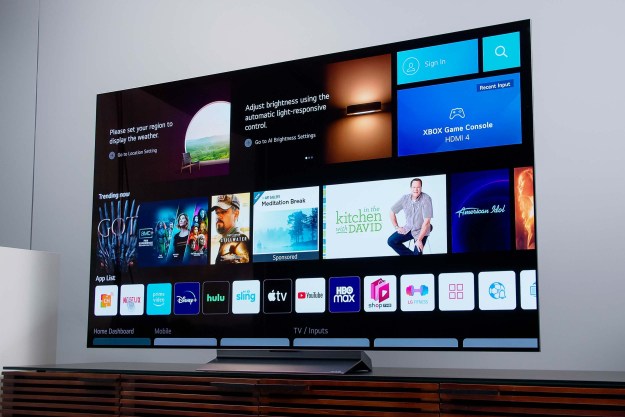
“LG's champion OLED TV continues to deliver the best premium performance for the price”
- Slick new design
- Improved peak brightness
- Excellent black levels
- Solid color accuracy and gamut
- Great for gamers
- Some peak brightness artifacts
- Complex smart TV system
The premium TV market has become real noisy early in 2022. The introduction of a new kind of OLED TV technology at CES, called QD-OLED, generated a level of excitement and anticipation rarely seen in the TV space. Since then, the buzz around Sony’s A95K and Samsung’s S95B QD-OLED TVs has been profuse, with early reviews gushing over QD-OLED’s next-level brightness and color volume.
Having written an initial review of the Sony A95K and gotten an up-close look at the Samsung S95B myself, I can confirm the hype is justified. In fact, I found Samsung Display’s new tech exciting enough to pen a piece about whether LG should be worried about QD-OLED. In the end, I decided the answer was no, LG need not be worried — and the LG C2 OLED TV reviewed here proves me right.
The culmination of over a decade of consumer OLED TV development, LG’s C2 TV cuts right through the noise with performance refinements and design enhancements that culminate in a knockout TV that perfectly models what happens when the whole is greater than the sum of its parts.
Video review
The LG C2 hits different
I’ve reviewed every OLED TV LG has produced since the 55EM9600 was introduced in 2012. And while LG’s popular C-series line has seen steady improvement over the past decade, I’d have to say its upgrades, year-over-year, have been mostly iterative — more evolution than revolution.
The C2 breaks that trend.
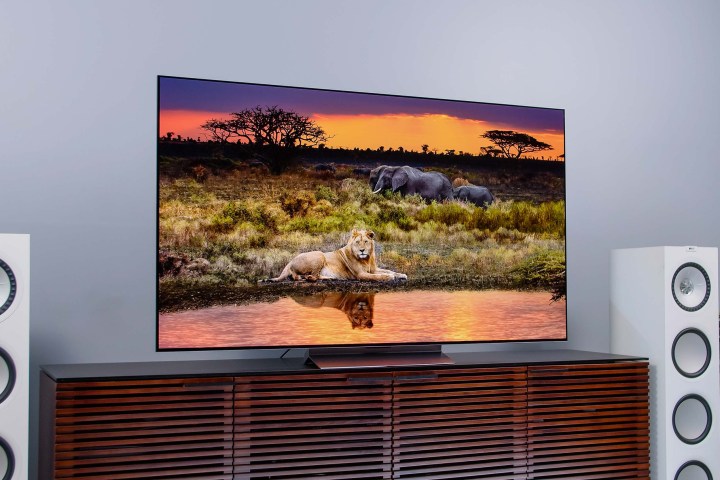
During a briefing ahead of CES 2022, LG told me about how both its C2 OLED line and its fancier, step-up G2 Gallery Series line had improved panels and processing technology, slimmer bezels, and new cabinet materials that made them significantly lighter, among several other improvements. Upon hearing all this, I nodded my head, raised a single eyebrow, and probably uttered a requisite “mm-hmm” in acknowledgment. Ever a skeptic, I reserve the right to appear unimpressed until I get my hands on a product and go over it with a fine-toothed comb.
Now that I have, I almost feel bad for underestimating the C2’s potential to impress.
By the way, the LG C2 is available in sizes ranging from 55 inches up to 83 inches, with pricing ranging from $1,800 to $5,500.
LG C2 OLED TV details
While we reviewed the 65-inch 65C2PUA model, our review also applies to the other models.
| 55-inch | 55C2PUA | $1,300 |
| 65-inch | 65C2PUA | $1,700 |
| 77-inch | 77C2PUA | $2,796 |
| 83-inch | 83C2PUA | $4,497 |
Svelte, slick, and … scary?
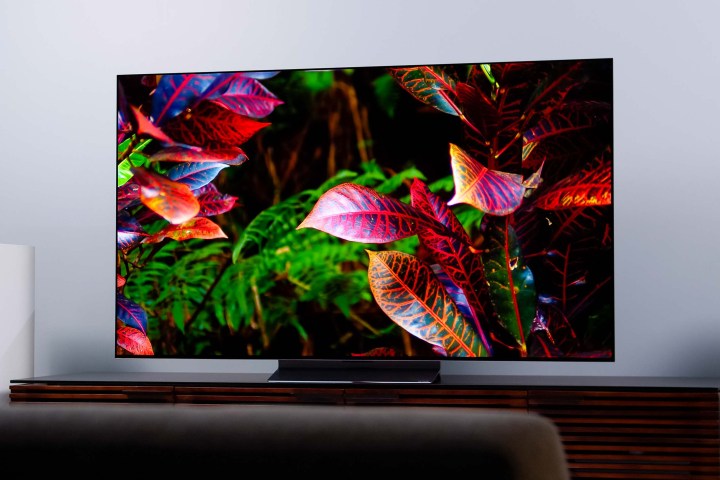
When I took delivery of the 65-inch C2 review sample at my testing lab, I was nothing short of shocked — concerned, even — by how light the box was. Is it possible I’d been shipped an empty cardboard box? (For the record, LG lists the shipping weight at about 57 pounds.)
My concern was abated when I found the C2 and its redesigned tabletop stand inside the box along with LG’s Magic Motion remote and some batteries, but my shock was exacerbated when I learned how much of the product’s shipping weight turned out to be the packaging and how little of the heft was accounted for by the TV.
Folks, the C2 is scary light. As a child of the 1980s, I’m still trying to overcome the heavy-means-quality axiom long held in the tech space, so it just seems weird to me that a TV could tip the scales like a featherweight, yet manage to land a punch like Mike Tyson after having water bottles thrown at him on an airline flight. The tale of the tape? A mere 37 pounds with the stand, and 32.6 without.
But here we are. LG’s composite fiber (not carbon fiber) is strong enough to cradle the delicate WRGB OLED panel securely and, according to LG, is more environmentally friendly, thanks to reduced shipping weight and bulk.
The C2 also has essentially no front-facing bezels. A remarkably thin strip of metal borders the edges of the panel, but can only be seen from a profile perspective.
The C2’s redesigned pedestal stands in stark 180-degree contrast to the design from the preceding two years when it weighed nearly 35 pounds. In addition to being nearly weightless, the new stand is also significantly reduced in width for a smaller footprint, but increased in height, allowing more room for the addition of a soundbar if so desired. There are no worries about stability, though — the panel and stand combo sat securely atop my media stand for the duration of this review without causing any concern.
Beautiful outside, powerful inside
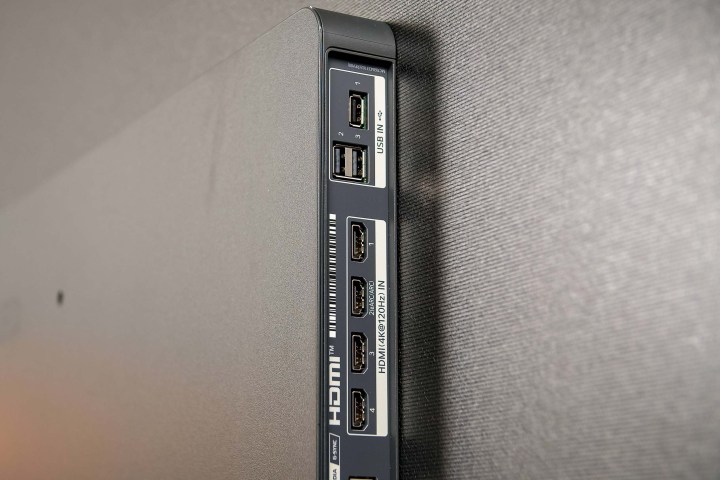
Four full-bandwidth HDMI 2.1 ports capable of all the things, LG’s Alpha 9 Gen 5 processor, and a redesigned WRGB OLED panel capable of higher peak brightness than LG’s previous OLED TVs highlight the C2’s list of admirable innards, all of which play a role in making the C2 one of the most advanced TVs available at its price point.
LG was the first to equip its top-tier TVs with four HDMI 2.1 ports and enjoyed a couple of years as the sole brand doing so. Now that Sony and Samsung are catching up, this may seem like less of a distinguishing factor, but look a little closer and you’ll see that the features these next-gen connection ports unlock are what sets LG apart.
For gamers seeking both Nvidia’s G-Sync and AMD’s FreeSync premium VRR in a TV, LG is the only game in town, and the C2 is one of the brand’s most affordable options. Though it is fair to question how beneficial both G-Sync and Free-Sync are to most buyers, it’s worth mentioning as one of the factors that make the LG C2 one of the most advanced gaming TVs you can buy.
The rest of the C2’s improvements and generally advanced performance can be credited to the combination of a recently updated WRGB OLED panel and the 5th generation of LG’s so-called Alpha 9 picture processor. It is the combination of these two elements, says LG, that constitutes the “EVO” badging you’ll see attached to LG’s latest OLEDs. EVO — short for evolution — has incorrectly been referred to as a new panel technology, and LG specifically requested this clarification. Regardless, the end result is supposed to be a brighter, more vivid OLED TV picture, and as I’ll discuss shortly, EVO delivers on that promise.
WebOS: Faster, more convenient, still with ads

The perfect smart TV operating system doesn’t exist. Some are slow and laggy, others look dated, and some make very little sense to the average user. Fortunately, LG’s WebOS avoids all of those pitfalls, providing a relatively easy-to-navigate interface with access to most of the apps most folks want to use, plus a whole host of apps most folks will never use. And therein lies the problem for me: WebOS still tries to do too much.
The LG C2 still makes me say ‘wow!’
Despite valiant efforts, TV brands have not yet managed to make their smart TVs the center of the smart home. Even with built-in voice control, one-click access to home security cameras, and the ability to tie together everything from one’s refrigerator to their smart vac, TVs still tend to be a destination for a singular activity: Watching TV.
Along those same lines, I believe most people would prefer to find what they want to watch unimpeded by ads, and yet here we are in an age where advertising on a TV’s home screen has become de rigueur. I’d rather it hadn’t. And I wish LG wasn’t playing ball.
I’m impressed that LG has put together a “home dashboard.” I’m impressed that LG has managed to equip its TVs to offer direct access to Alexa, Google Assistant, and its own voice AI. I’m impressed by LG’s algorithmic content suggestions. But while I may be impressed, I’ve not convinced I or anyone else really needs or wants these things on their TV, even now after years of forced indoctrination.
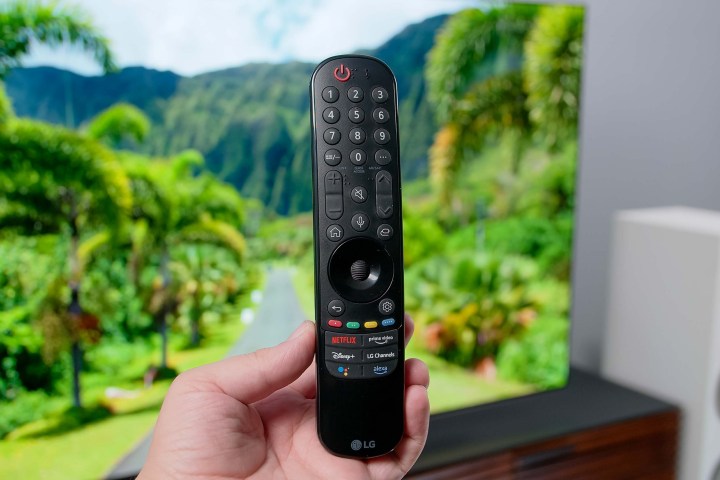
LG’s WebOS has made it easier to switch from one content source to another, is the best smart TV platform for sports fans, and even LG’s Magic Motion Remote has been simplified for a better experience. It’s a fine system. It’s just unnecessarily complicated and busy. And I’m sick of ads.
Picture quality
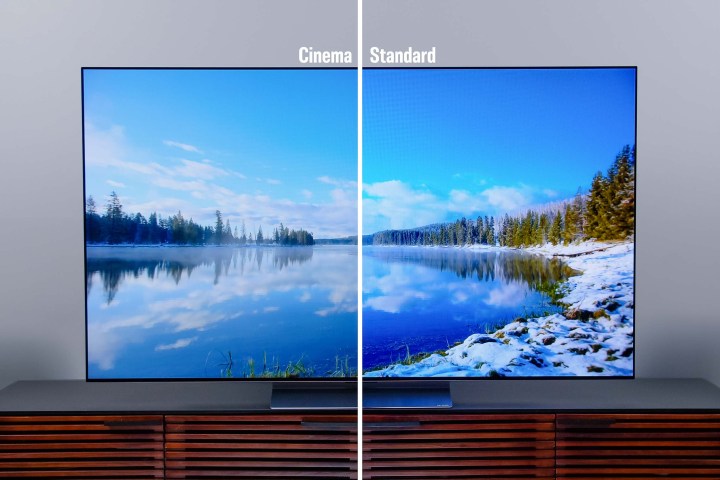
I’ve been among the first to see next-gen display technologies this year, including the Sony A95K QD-OLED and the Samsung Q95B OLED, and while I found those competing TVs quite impressive and could easily have been ruined by them, the LG C2 still made me say “wow!”
If I can convey only one message with this review, it’s that the LG C2 really delivers the “wow.” And it isn’t just the picture quality — which is excellent — it’s the whole package: the attractive design, the lightweight enclosure, the on-screen interface, the surprisingly decent sound quality. But, yes, also the dazzling picture quality.
From a measurements perspective, I think some folks were hoping for some higher numbers in the peak brightness field. Indeed, the LG C2 does get a bit brighter than its predecessor, the C1. But the measurements don’t really tell that story. Side by side, the numbers look very similar, but the pictures look very different. That’s because true to LG’s word, the C2’s advantages really do come down to a combination of display panel and processing. Before I offer some perspective, here’s a little bit of measurement info. Feel free to skip to the next section if you’d like.
Numbers for nit nerds
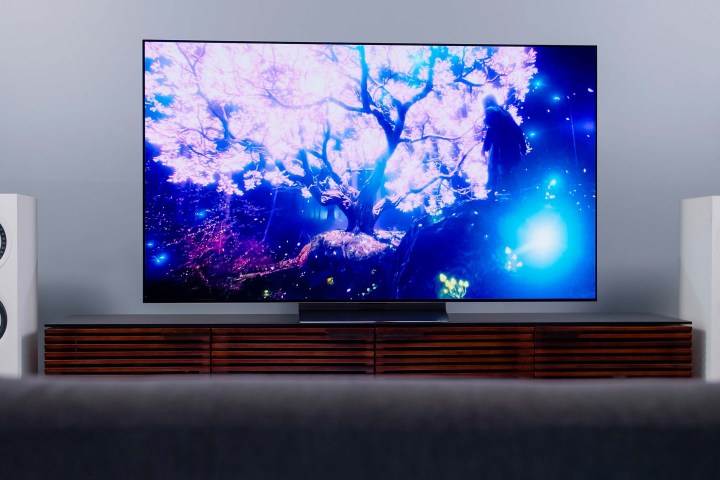
When I measured the peak white brightness in HDR on the LG C2, it came in at about 820 nits. The same measurement on the LG C1 came in at about 765. You don’t need to be a nerd for nits to know that’s not a big difference in numbers. Yet, when you view the C2, it does offer higher perceptual brightness than the C1. And I think that may be because LG’s Alpha 9 Gen 5 processor is placing max brightness power where it needs it most in real-life content. In other words, LG’s processor doesn’t give a hoot about my pattern generator’s 10-percent white window pattern and isn’t going to bother to do its best work.
I should also note the LG C2 was able to max out at 314 nits in SDR with a 10 percent window in ISF bright mode, which should be adequate for all but those who watch a lot of TV in a bright room. With a 50-percent window (half the screen lit up), the LG C2 maxed out at 260 nits. Higher brightness is available in Standard and Vivid modes, though the latter looks atrocious and the former sacrifices color accuracy.
Undeterred by the LG C2’s indifference to my testing needs, I pressed on with measuring using a Spectracal C2 colorimeter profiled to an Xrite i1Pro Spectroradiometer in conjunction with Calman Ultimate software and found the LG C2’s color accuracy in Filmmaker, ISF Bright and ISF Dark modes to be very good without any adjustment to the 2-point white balance, while color gamut coverage reached 99 percent of DCI-P3 colorspace, and 72 percent of Rec. 2020. Whites did tend to have a somewhat green cast to them, as has long been the case with LG’s WRGB OLED panel, but I was able to get that adequately corrected with adjustment to the 2-point white balance. For those who would like their TV professionally adjusted, I’d suggest enlisting the services of an accredited professional calibrator.
Pure black levels were of course perfect (it’s OLED) and near-black shadow detail was very good thanks to LG’s dynamic tone mapping, though that same dynamic tone mapping also raised mid-tones as it assisted in revealing shadow detail. Given the way WRGB OLED panels behave, I think this trade-off is both unavoidable and in most viewers’ best interests since most folks would never know it was happening.
Real-life picture quality
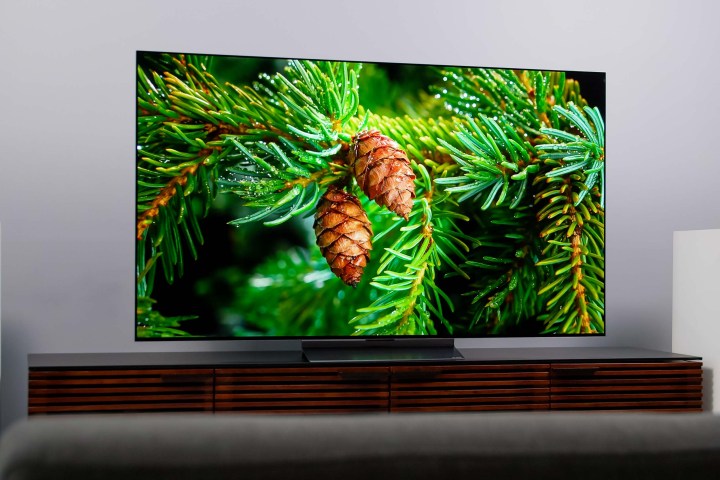
The LG C2 offers incredibly impressive picture quality. Colors are vivid (to a point) and accurate, the TV offers dazzling
I think the LG C2 OLED offers the best picture quality you can get for the money.
LG’s Alpha 9 Gen 5 processor did an excellent job deciding when to exert max brightness muscle while maintaining brightness details, and when to expose shadow details without sacrificing deep, rich black levels. The resulting picture is extremely enjoyable, even to those who don’t consider themselves video enthusiasts. You can just tell the LG C2 puts out a luscious image.
LG’s motion handling is also better than its ever been, as exhibited by the C2 and, I suspect, the higher-end G2 as well. I’m not a fan of motion smoothing (aka motion interpolation) effects since they make everything look like a soap opera to me, but as motion smoothing goes, LG’s is now among the best in the business, exhibiting few artifacts while providing a very smooth judder- and blur-free picture.
In the end, I think the LG C2 OLED offers the best picture quality you can get for the money. You can spend a little more and get a little more, but the LG C2 should be considered the point at which diminishing returns kick in. In other words, the LG C2 is going to make the most sense for the most people seeking excellent picture quality without having to shell out obscene money for the privilege.
Sound quality
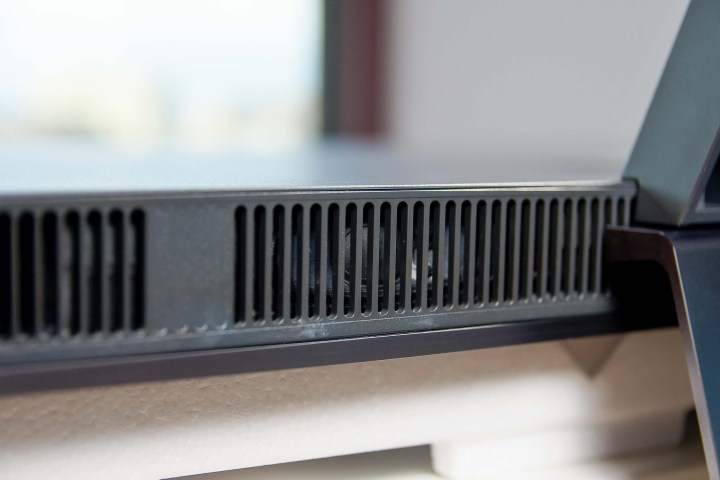
I was concerned the LG C2’s sound quality would take a hit given the cabinet has been slimmed down, is made of high-tech plastic, and the down-firing speakers no longer have a metal scoop to direct sound at the listener, as was the case with the C1 OLED and its much wider, brushed metal stand. Fortunately, however, the C2 manages to produce respectable sound, despite its light and thin chassis.
To be clear, if I was purchasing this TV, I would make sure to pair it with a soundbar or some other premium audio solution. The TV deserves it and so do your ears. But if a premium audio purchase isn’t in the cards for now, know that the LG C2’s onboard audio will do the trick just fine for the time being.
Gaming
LG has some serious competition from Samsung in the gaming realm this year, now that Samsung is including four
Our take
The LG C2 is an exceptionally good TV that offers real benefits over the prior-year C1 model it replaces. Moreover, it’s just a straight-up excellent TV that produces a picture that will gobsmack most viewers, and it does so at a reasonable, if still premium, price.
Is there a better alternative?
Not exactly, no. The LG C2 offers the best combination of picture quality, user experience, and gaming features. To get a better/different picture quality experience, you’ll have to spend at least $500 more on the Samsung S95B and be limited to 55- or 65-inch size options. Also, the Samsung S95B, while more vivid and engaging, doesn’t appear to be as accurate as the LG C2. The Sony A95K may be more vivid and accurate, but it is significantly more expensive and also limited to 55- and 65-inch size variants. Given all of those qualifications and requirements, the LG C2 remains the best premium TV choice for most buyers.
How long will it last?
Given LG’s OLED TV track record over the past decade and the rich list of next-gen features with which the C2 is equipped, the TV should last well into the future.
LG offers a one-year parts and labor warranty against common defects. LG does offer a five-year warranty on its more premium G2 and Z1 OLED TVs.
Should you buy it?
Yes. The LG C2 is a fantastic TV and well worth the cost.
Editors' Recommendations
- Bluetooth on Sonos’ new Era speakers isn’t what you think – it’s better
- What is Sonos? The speakers, app, and everything you need to know about wireless music
- The first Roku-made televisions are now available at Best Buy
- 11 Sonos tips, tricks, and little-known features
- The Sonos Era speakers solve a major problem for Android users

